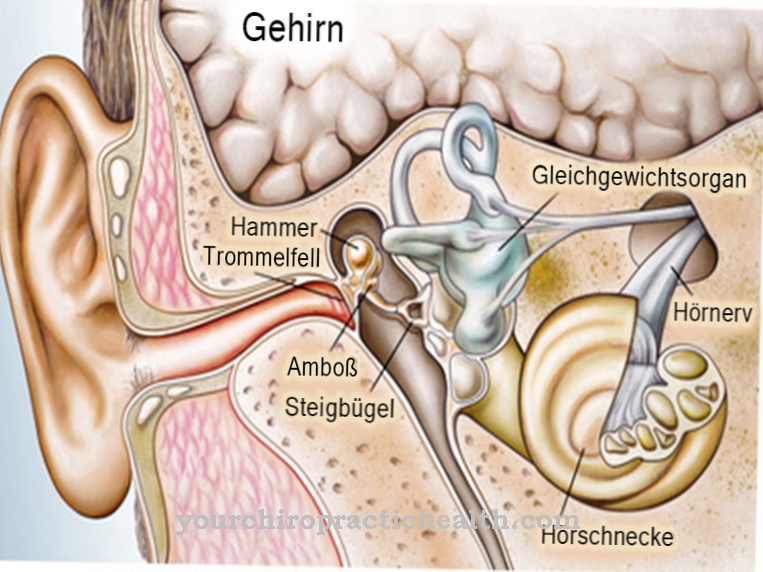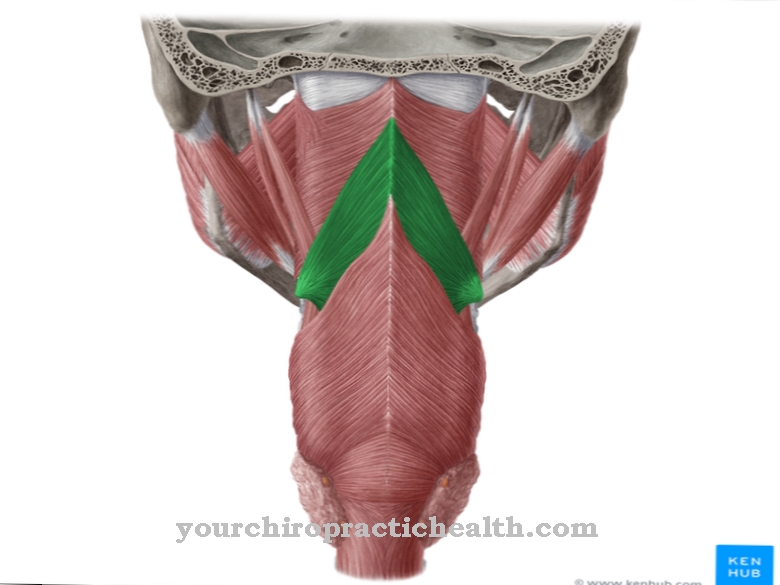The Tonsillectomy or Almond removal refers to the complete removal of the tonsils using surgical procedures. It is one of the most common operations, although it is no longer used as a preventive measure, as it was very often the case in the 1970s.
What is tonsil removal?

The Tonsillectomy is a routine procedure in which the tonsils are surgically removed and is still the most common operation in the ear, nose and throat area today.
During the operation, the palatal arch is first cut open and then the tonsils are removed from the almond bed. Various methods are available for this purpose, which nowadays almost all aim at sclerosing the tissue in such a way that secondary bleeding occurs as rarely as possible, which in very rare cases can even be fatal.
Function, effect & goals
In the 1970s the Tonsillectomy removed preventively in children to prevent inflammation of the tonsils.
Today it is assumed that the tonsils, which are part of the lymphatic system, do an important job in the human immune system and that is why an operation is only carried out if the inflammation does not subside even after repeated antibiotic treatment or if it keeps returning. Even if the infection has become chronic, the last resort is often to remove the tonsils.
The chronic infection is often accompanied by suppuration of the tonsils. In this case, the tonsillectomy is also performed to prevent the bacteria responsible for the suppuration from spreading to other parts of the body.
If the tonsils are so enlarged that they prevent children from breathing or if the tonsils, the polyps, are overgrown, an operation on the tonsils is also often unavoidable. However, in these cases a so-called tonsillotomy, a partial removal, is often performed and only the overgrown tissue is removed.
There are other reasons that make a tonsillectomy necessary, such as chronic swallowing difficulties or the suspicion of a tonsil tumor, which are not as common as the causes listed above.
The tonsillectomy is usually associated with a hospital stay, which lasts 3 to 8 days depending on the course of the operation, medical history and risk of rebleeding. The procedure itself takes about 30 minutes and is usually straightforward.
The tonsillectomy is often performed with the help of a so-called electrocautery. This device uses high heat to remove tonsil tissue and at the same time obliterates it, reducing the chance of rebleeding. Further methods are the harmonic scalpel method, which works with ultrasound, radio frequency ablation, which works with high-frequency radio waves, and carbon dioxide laser tonsillectomy, a special form of laser surgery using a carbon dioxide laser. What all of these methods have in common is that they heat the tissue and at the same time scorch it.
A method that works a little differently than the ones mentioned so far is called the thermal welding method. This has the advantage that it heats the tonsil tissue much less, which greatly reduces the patient's pain after the operation. And bipolar radio frequency ablation is a newer method that works without heat and removes the tonsils through the use of high radio frequencies.
After the tonsils have been removed, the blood vessels are tied off and any bleeding that occurs is stopped by electroagulation, which also uses heat to stop the bleeding.
The pain after a tonsillectomy is often felt by patients as very severe and can last up to 4 weeks. A period of 2 weeks after a tonsillectomy is mandatory. During this time, neither sports nor activities should be carried out that put a lot of strain on the neck and head area or lead to a rush of blood to the head, such as washing hair with the head bent forward.
You can find your medication here
➔ Medication for tonsillitis & sore throatRisks, side effects & dangers
The most common complication after a Tonsillectomy is the rebleeding, which occurs in around 1 to 4% of all operations. Children should therefore always be observed in the first three weeks after a tonsillectomy, as heavy secondary bleeding in them, due to the fact that they have far less blood than adults, can possibly even be fatal if not timely and helpful intervention is made . Young children in particular are at risk of suffocating on their own blood or of the blood getting into the lungs, causing an urge to cough, which in turn can increase the bleeding.
Bleeding from scab detachment is most common between 5 and 8 days after surgery and is usually normal. As long as they come to a standstill by themselves, there is no need to intervene in these cases. Tonsillectomy rarely has cases in which further surgery is required to stop the bleeding.
If heavy bleeding occurs, the patient should first be placed in a stable lateral position. Cooling compresses around the neck can be helpful to at least slow down the blood flow. An ambulance must then be called immediately if it is not possible to take the patient to the hospital as quickly as possible.



























